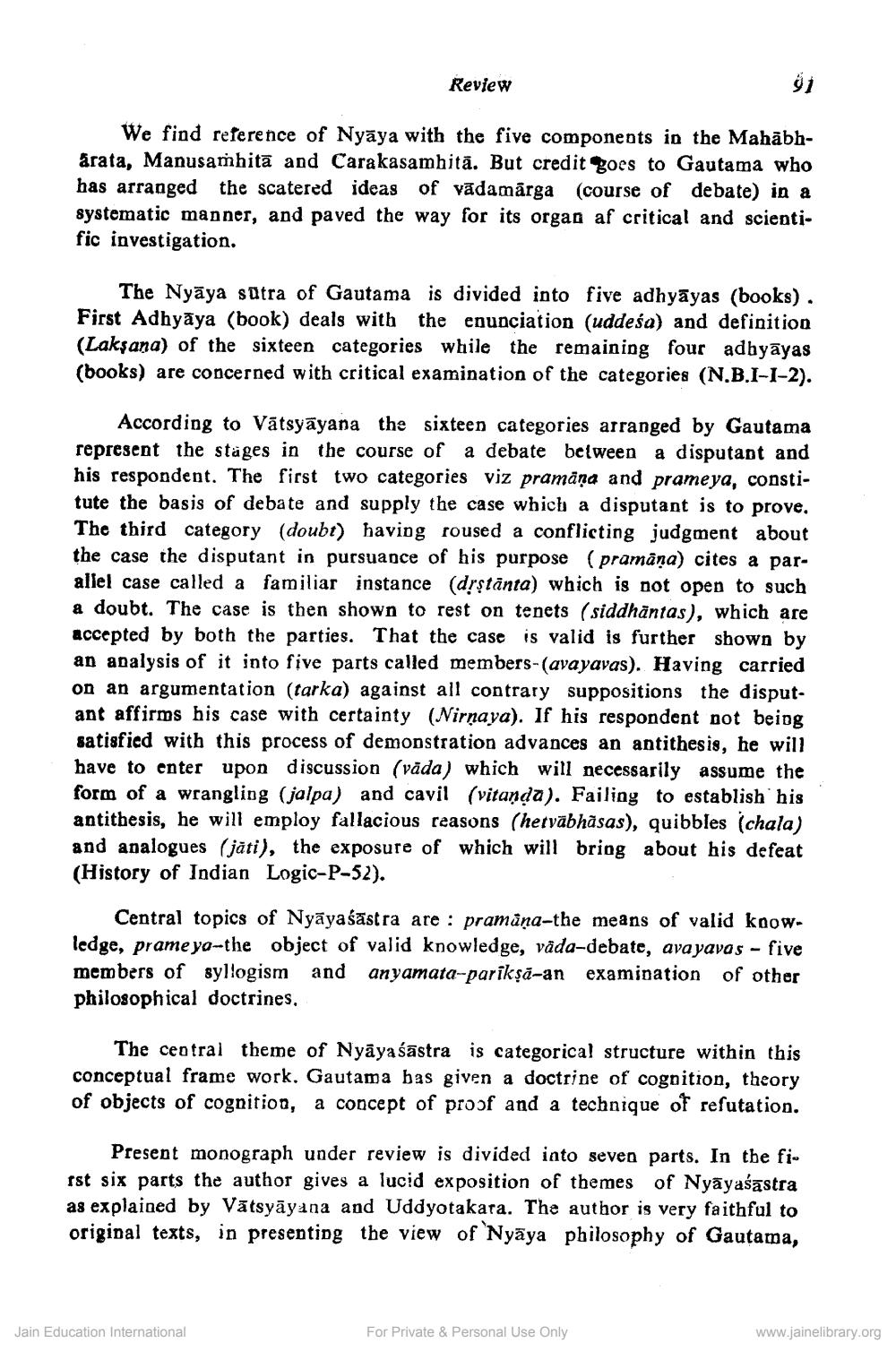________________
Review
9 1
We find reference of Nyāya with the five components in the Mahābhärata, Manusamhita and Carakasamhitā. But credit goes to Gautama who has arranged the scatered ideas of vādamārga (course of debate) in a systematic manner, and paved the way for its organ af critical and scientific investigation.
The Nyāya sutra of Gautama is divided into five adhyāyas (books). First Adhyāya (book) deals with the enunciation (uddeśa) and definition (Laksana) of the sixteen categories while the remaining four adhyāyas (books) are concerned with critical examination of the categories (N.B.I-1-2).
According to Vātsyāyana the sixteen categories arranged by Gautama represent the stages in the course of a debate between a disputant and his respondent. The first two categories viz pramāna and prameya, constitute the basis of debate and supply the case which a disputant is to prove. The third category (doubt) having roused a conflicting judgment about the case the disputant in pursuance of his purpose (pramāna) cites a parallel case called a familiar instance (drstānta) which is not open to such a doubt. The case is then shown to rest on tenets (siddhāntas), which are accepted by both the parties. That the case is valid is further shown by an analysis of it into five parts called members-(avayavas). Having carried on an argumentation (tarka) against all contrary suppositions the disputant affirms his case with certainty (Nirnaya). If his respondent not being satisfied with this process of demonstration advances an antithesis, he will have to enter upon discussion (vāda) which will necessarily assume the form of a wrangling (jalpa) and cavil (vitanda). Failing to establish his antithesis, he will employ fallacious reasons (hervabhāsas), quibbles (chala) and analogues (jāti), the exposure of which will bring about his defeat (History of Indian Logic-P-52).
Central topics of Nyāyaśāstra are : pramāņa-the means of valid knowledge, prame yo-the object of valid knowledge, våda-debate, ava yavas - five members of syllogism and anyamata-parikṣā-an examination of other philosophical doctrines.
The central theme of Nyāyaśāstra is categorical structure within this conceptual frame work. Gautama has given a doctrine of cognition, theory of objects of cognition, a concept of proof and a technique of refutation.
Present monograph under review is divided into seven parts. In the first six parts the author gives a lucid exposition of themes of Nyāyaśāstra as explained by Vātsyāyana and Uddyotakara. The author is very faithful to original texts, in presenting the view of Nyāya philosophy of Gautama,
Jain Education International
For Private & Personal Use Only
www.jainelibrary.org




